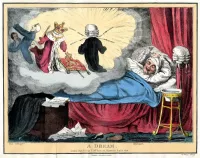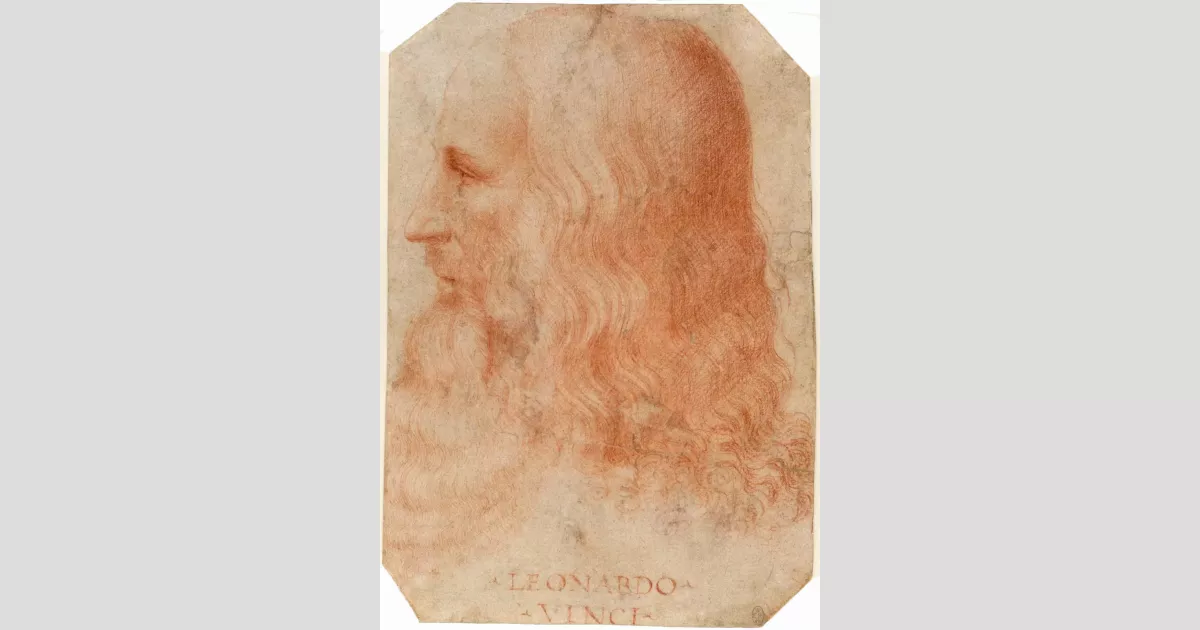Leonardo da Vinci, a prominent figure of the High Renaissance, was an Italian polymath excelling in painting, drawing, engineering, science, theory, sculpting, and architecture. While renowned initially for his paintings, his notebooks, containing drawings and notes on diverse subjects such as anatomy, astronomy, botany, cartography, painting, and palaeontology, have also contributed significantly to his fame. Considered a genius embodying the Renaissance humanist ideal, his work has influenced generations of artists, rivaled only by his contemporary, Michelangelo.
1925: Sale of Leonardo's Ring and Hair
Houssaye's great-grandson sold a ring and a lock of Leonardo da Vinci's hair to an American collector in 1925.
1967: Liana Bortolon's writing on Leonardo
In 1967, Liana Bortolon wrote about the enduring interest in Leonardo da Vinci's genius.
2003: Leonardo's Dream Machines Documentary
In 2003, a Channel Four documentary titled "Leonardo's Dream Machines" tested the functionality of various machines designed by Leonardo da Vinci, including a parachute and a giant crossbow.
2003: Kemp's Bibliography on Leonardo
Martin Kemp published an extensive bibliography on Leonardo da Vinci in 2003.
2009: Doing DaVinci TV Series
The 2009 American television series, "Doing DaVinci", featured engineers constructing ten machines designed by Leonardo da Vinci, such as a fighting vehicle and a self-propelled cart.
2016: DNA Tests Planned for Remains
In 2016, plans were announced to conduct DNA testing on remains potentially belonging to Leonardo da Vinci. These tests would compare DNA from the remains to samples collected from Leonardo's work and his half-brother Domenico's descendants.
2017: Sale of Salvator Mundi
In 2017, Leonardo da Vinci's painting, Salvator Mundi, was sold at auction for a record-breaking US$450.3 million, making it the most expensive painting ever sold publicly.
May 2019: Display of Leonardo's Ring and Hair
On May 2, 2019, the 500th anniversary of Leonardo da Vinci's death, a ring and lock of his hair were displayed at the Leonardo Museum in Vinci. These artifacts had been kept by Arsène Houssaye and later sold to American collectors.
November 2019: Leonardo Exhibition at the Louvre
The Louvre in Paris held the largest ever exhibition of Leonardo da Vinci's work, titled "Leonardo", from November 2019 to February 2020. It featured over 100 paintings, drawings, and notebooks, though the Mona Lisa and Salvator Mundi were not included.
2019: Bambach's Bibliography on Leonardo
Carmen C. Bambach published an extensive bibliography on Leonardo da Vinci in 2019.
February 2020: End of Leonardo Exhibition at the Louvre
The "Leonardo" exhibit at the Louvre, showcasing over 100 pieces of da Vinci's work, ended in February 2020.
2021: Leonardo's Living Relatives Identified
In 2021, research led by Alessandro Vezzosi and Agnese Sabato identified 14 living male relatives of Leonardo da Vinci through genetic genealogy analysis. This discovery could aid in authenticating remains believed to be Leonardo's.
Mentioned in this timeline

Dreams are involuntary sequences of images ideas emotions and sensations...
Trending

6 months ago Aaron Rodgers and Mike Tomlin: An Unlikely Collaboration in Pittsburgh?

Chevy Chase born Cornelius Crane Chase is a prominent American comedian actor and writer His career took off with his...
5 months ago SharePoint Server Hackers Employ Ransomware; Microsoft Disrupts Exploitation of Vulnerabilities

2 months ago Justin Tucker's NFL Suspension Ends; Potential Teams Include Packers, Rams, and Falcons.
Katherine LaNasa is an American actress known for her role as Nurse Dana Evans in the HBO Max medical drama...

Raheem Morris is an American professional football coach currently serving as the head coach for the Atlanta Falcons He has...
Popular

Stranger Things created by the Duffer Brothers is a popular...

XXXTentacion born Jahseh Dwayne Ricardo Onfroy was a controversial yet...

Kelsey Grammer is an accomplished American actor producer and singer...

Candace Owens is an American conservative political commentator and author...

Bernie Sanders is a prominent American politician currently serving as...

Melania Trump a Slovenian-American former model has served as First...
